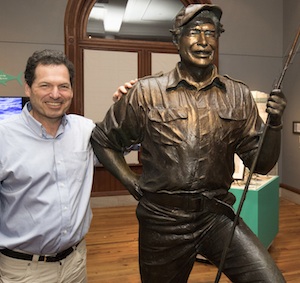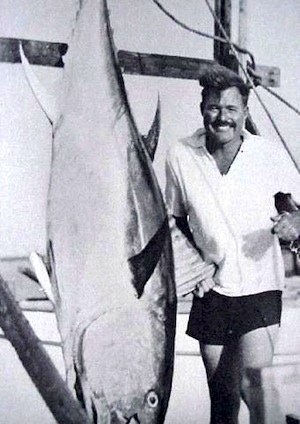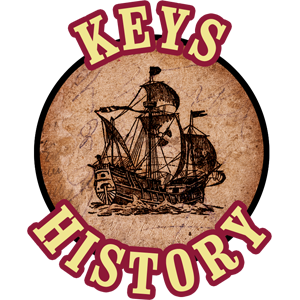'Following the Fish' Spotlights Ernest Hemingway's Key West Angling Exploits
KEY WEST, Florida Keys — Ernest Hemingway, who lived and wrote in Key West throughout the 1930s, immersed himself in Florida Keys game fishing and did much to popularize it among fellow writers, readers and sportsmen. His angling exploits are showcased in a new exhibit titled "Following the Fish: Hemingway in Key West" at the island city's Custom House Museum, 281 Front St.
The exhibition also spotlights the late author's conservation activities, an intriguing counterpoint to his well-known passion for boating giant marlin, tuna and other prey in a pursuit likened to oceanic big game hunting.
"What the exhibit endeavors to do is show that, while Hemingway is perceived as an aggressive personality, he did have a vested interest in safeguarding the fish populations in the Florida Straits," said Cori Convertito, curator at the Custom House. "By inviting scientists from the Academy of Natural Sciences to visit this region with the intention to study marlin, tuna and other species, Hemingway demonstrated his true preservationist disposition."
When he wasn't penning literary classics, Hemingway plied the waters between Key West and Cuba aboard his 38-foot fishing boat, Pilar. Encounters with finned prey found their way into his books from "To Have and Have Not," set in Depression-era Key West, to the Nobel Prize-winning "The Old Man and the Sea."
A model of Pilar is among the items on display at the Custom House, as are Hemingway's detailed fishing logs and field notes that illustrate his quest to understand the science of fishing. A 1937 letter to the author from the Belmar Fishing Club states that he has been awarded a "Glory of the Sport Fraternity" pin recognizing his "outstanding catches and activities in promoting angling."
Among other exhibit highlights are examples of antique fishing tackle used by big game fishermen during the 1930s and '40s: a Greenheart rod with a Pflueger Atlapac reel, South Bend marlin teasers designed by Western writer (and Keys fishing aficionado) Zane Grey, a Pompanette 6-inch flying gaff and much more.
Museum visitors also can learn about the Keys' angling legacy and its environmental effects through additional exhibit modules — and can attempt to emulate Hemingway's skill on a fishing simulator.
"Following the Fish" is presented by the Key West Art & Historical Society with support and collaboration from the Florida Keys National Marine Sanctuary and Mote Marine Laboratory. The exhibit is to remain on display at the Custom House through July 2015.
Event information: kwahs.org
Key West fishing information: fla-keys.com/keywest/fishing.cfm
Key West visitor information: fla-keys.com/keywest
or 1-800-LAST-KEY
Social: Facebook • Twitter • KeysVoices.com • YouTube

John Hemingway poses with a statue of his grandfather, cast in bronze. Image: Rob O'Neal

Ernest Hemingway with a blue marlin.

